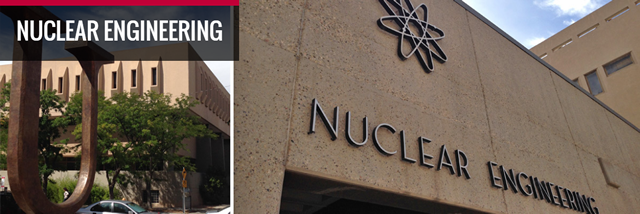
Nuclear Engineering ETDs
Publication Date
6-26-2015
Abstract
Fission fragment and product inventories play an important role in many areas of nuclear science from simulation of fissioning systems to active and passive interrogation of nuclear materials. The characteristic properties of fission fragment distributions are currently lacking in experimental data. New data is needed to reduce the uncertainty in the current standard data and to expand on current data for other incident neutron energies. To attain the goal of new fission fragment data, the Spectrometer for Ion Detection in Fission Research (SPIDER) project is currently underway at Los Alamos National Labortory (LANL). The SPIDER project is intended to be a multi-armed spectrometer that will use high resolution measurements and event by-event analysis to add to the library of nuclear fission data. Our group at the University of New Mexico is working as a collaborator on the SPIDER project to achieve a mass resolution of 1 amu with our own UNM fission fragment spectrometer. Mass is determined by combining particle-by-particle data from a time-of-flight detector and an ionization chamber energy detector. Our UNM spectrometer will also be capable of gathering fission fragment charge (Z) data, due to the addition of an active cathode in the ionization chamber. Preliminary testing has already taken place at the LANSCE facility at Los Alamos, resulting in uncorrelated energy and timing data. Futher data will be taken at a later date at the LANSCE facility. The UNM ionization chamber has achieved uncorrelated, uncalibrated preliminary results at LANL for fission fragment energy distributions at the LANSCE facility. A current energy resolution of 1.5% at high pressures for alpha particles has been measured. In addition to energy measurements, the ionization chamber has achieved measuring the range of alpha particles and both light and heavy fission fragments through use of an active cathode. Further characterizing has also been done on the ionization chamber to better understand the effects of internal andexternal variables on energy resolution and particle range measurement.
Keywords
Ionization Chamber, Radiation Detectors, Fission Fragment Spectroscopy, Bragg Curve Spectroscopy, Time of Flight, Charged-particle spectroscopy, Fission Fragments
Document Type
Thesis
Language
English
Degree Name
Nuclear Engineering
Level of Degree
Masters
Department Name
Nuclear Engineering
First Committee Member (Chair)
Busch, Robert
Second Committee Member
Cooper, Gary
Third Committee Member
Hecht, Adam
Recommended Citation
Heffern, Lena. "Ionization Chamber Design, Development, and Testing for the UNM Fission Fragment Spectrometer." (2015). https://digitalrepository.unm.edu/ne_etds/46


